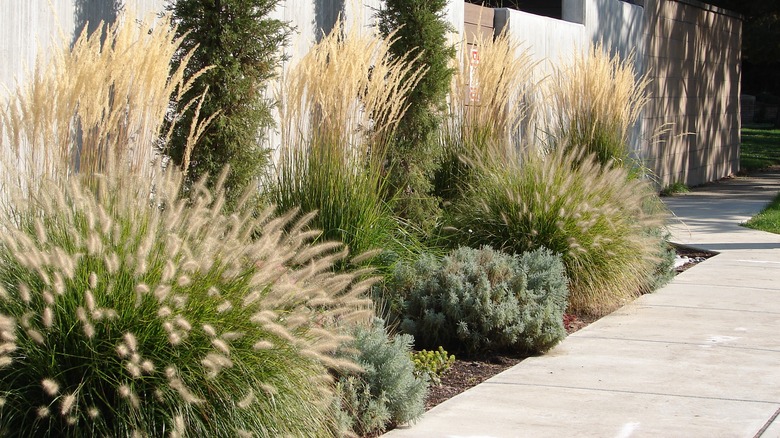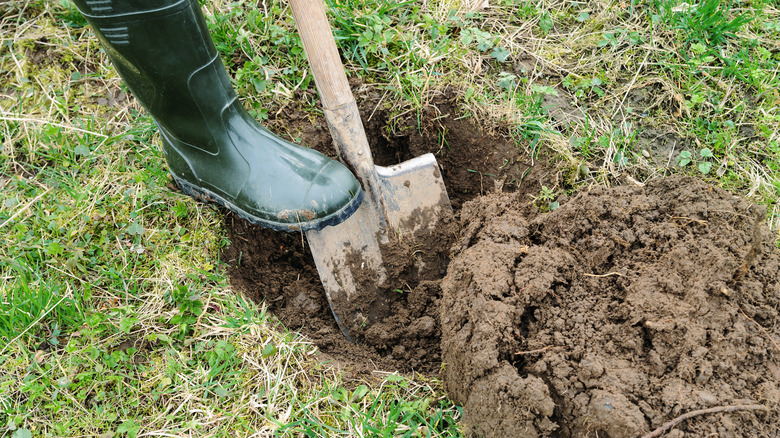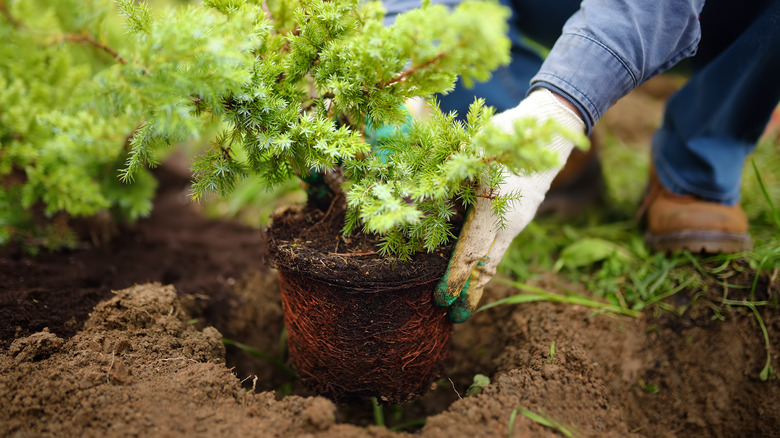How To Easily Plant Shrubs In Your Front Yard
If you're looking to add a pop of greenery and nature to your front yard, look no further than shrubs. Shrubs are a woody perennial category of plant that can take almost innumerous forms. Some are bright and bushy, others darker and more scarce (via Britannica). Some grow tall and wide, others low and flat. Different species may even produce flowers.
Like all plants, the type of shrub you should plant and grow depends entirely on your region and climate. A trip to your local nursery or garden center should provide you with plenty of viable options. While choosing a shrub to grow is quite easy, the more difficult issue may be how to actually plant it. If you're a beginner gardener, this can seem like a somewhat daunting task. Since the shrubs will likely be a permanent feature in your front yard, you want to ensure you get it right the first time.
Dig and prepare the hole
Before planting your shrub, you need to prepare a planting site. There is no one right way or place to plant shrubs since each one has different sun, temperature, and spacing needs. Generally, the tag that comes with your shrub should tell you where to plant it and how much space it will need.
The more important aspect of preparing the planting site is how deep and wide to dig the hole and what, if any, soil amendments to add. Milorganite says that the hole for your shrub should be anywhere from two to three times wider than the root system as it currently is. Roots grow out and down, so only dig the hole as deep as its nursery pot — going too deep could lead to the development of root or crown rot. If you want to be on the safer side, consider even planting it a little above the ground.
Next, check if your shrub or dirt needs any soil amendments. Again, this varies based on what you're planting and where. For example, your shrub may need more or less acidic soil, or your dirt may need something to break up clay or sand. Check with your local garden center or nursery for advice. Adding nutrient boosters like compost is almost always recommended, though. To mix it in, dig out a little bit more of your hole and mix the amendment with the surrounding dirt.
Plant the shrub
Now that the hole is ready, it's time to plant your shrub. Begin by removing it from its nursery pot and giving the roots a quick once-over. Look for any signs of infestation or disease, as well as any old or rotten roots, removing anything concerning. Then, use your hands (ideally with gardening gloves on) to break up the root system and packed dirt. As Milorganite warns, planting your shrub with bound roots will lead to it suffocating and dying.
Lower your plant into the hole, and begin adding backfill around it. You can use a shovel in the beginning, but using your hands evenly distributes the dirt and prevents air pockets. Once the hole is filled, water it thoroughly to expose any hidden air pockets, and use your hands to pat it down firmly. Don't forget to mulch it, advises Weed Pro. The mulch will seal in moisture, help your plant self-regulate its watering needs, and prevent weeds. Plus, it'll give your front yard a polished, uniform look. Finally, remove all plant tags, and if your shrub is young or otherwise top-heavy, consider adding stakes to support its growth.


